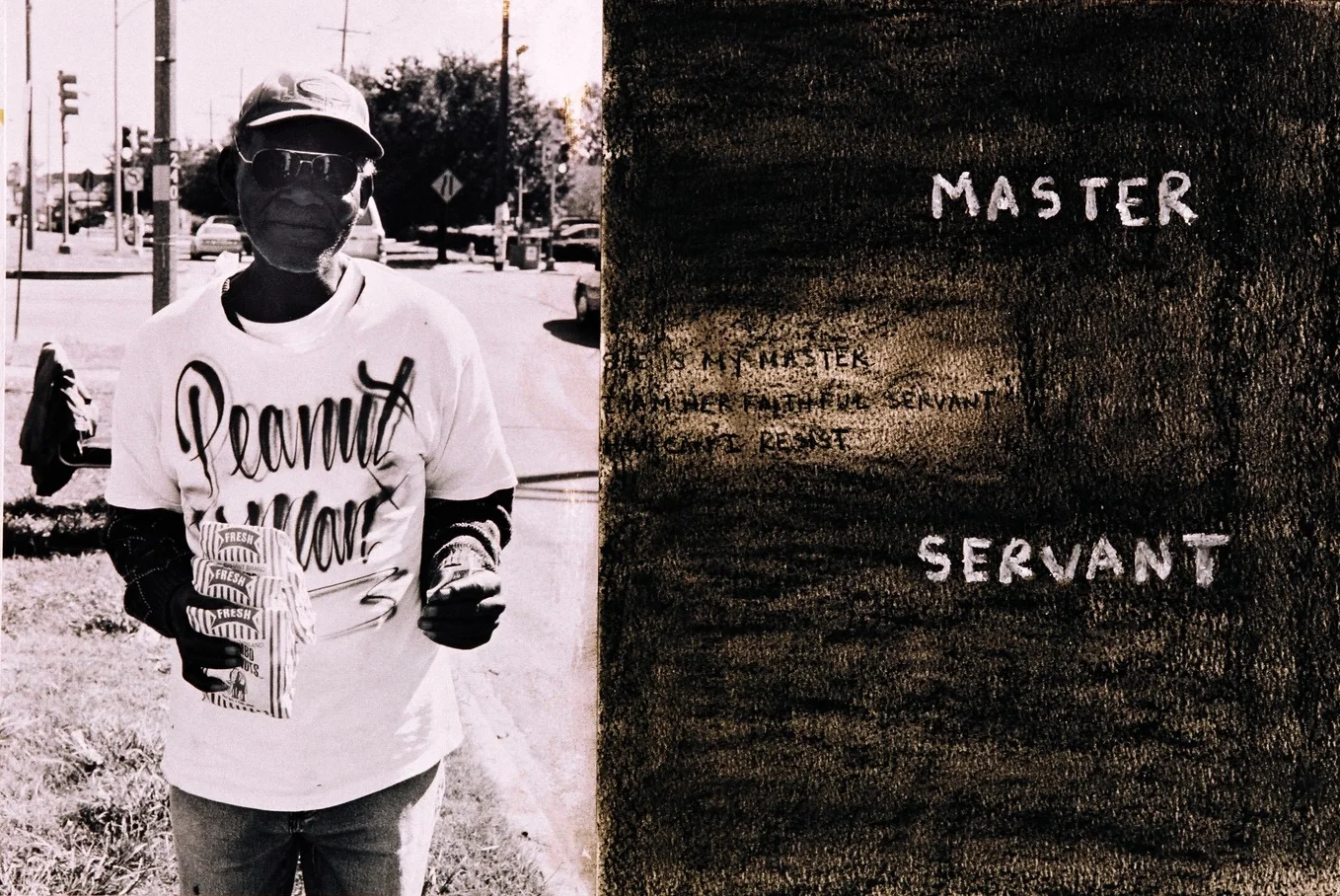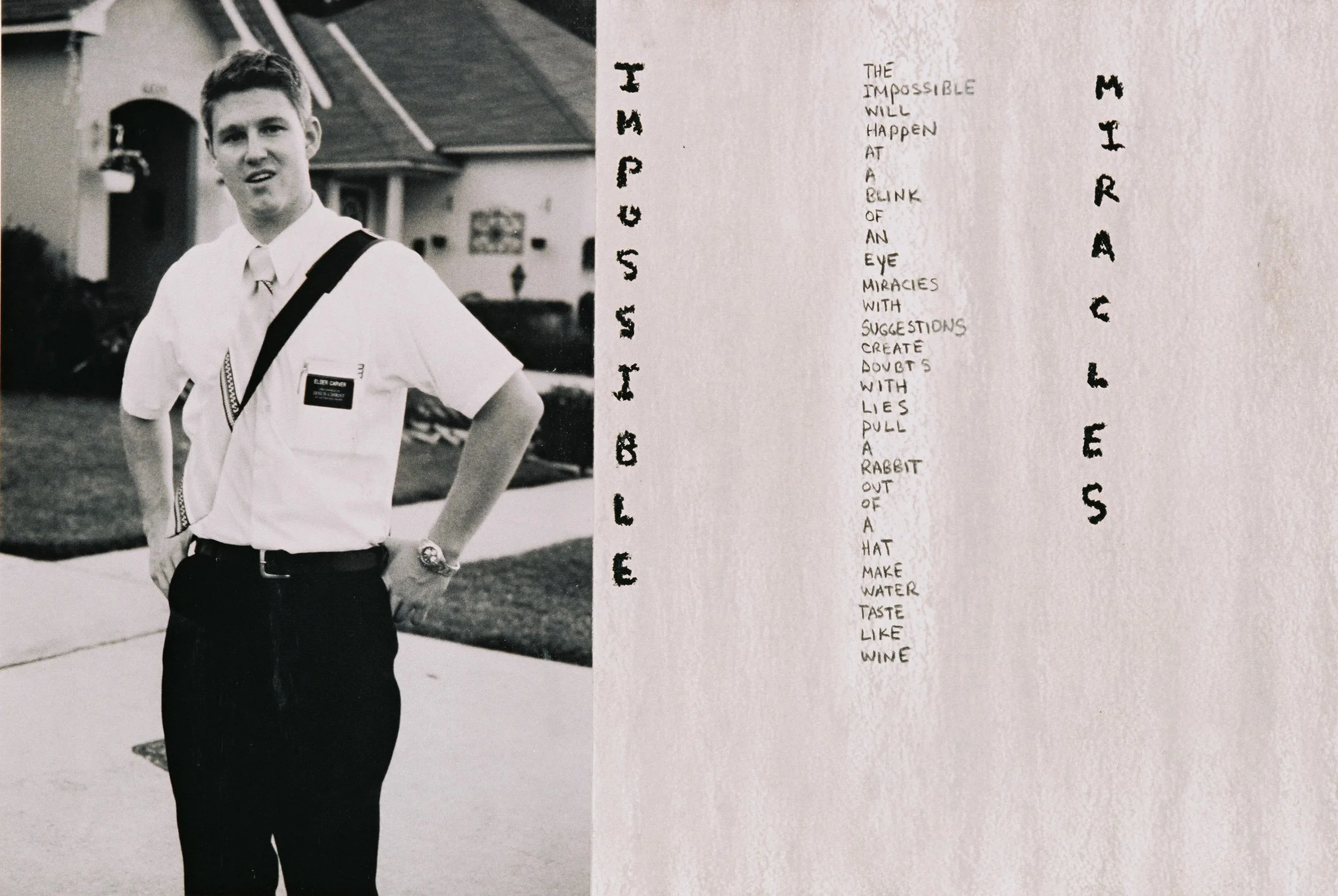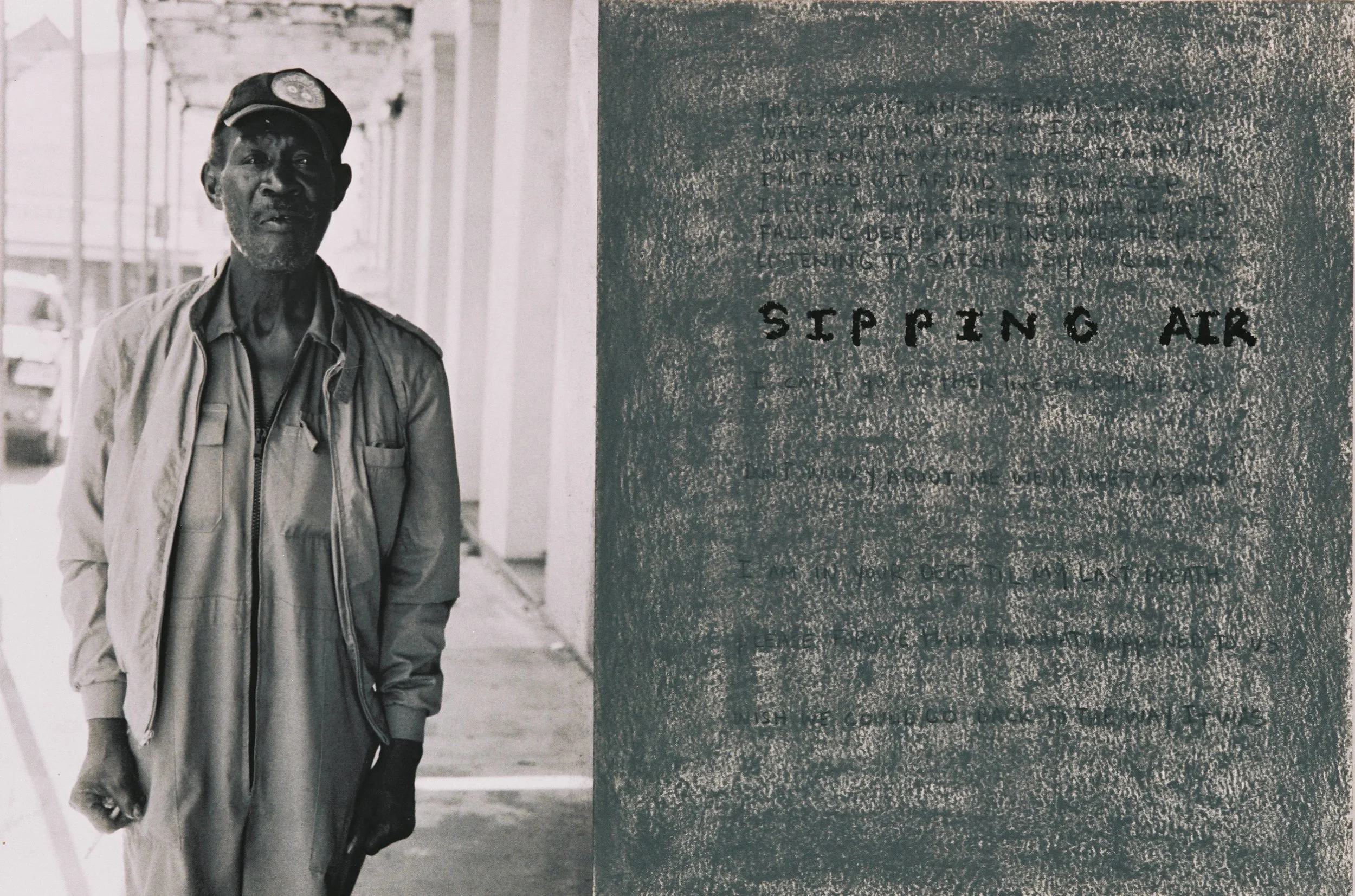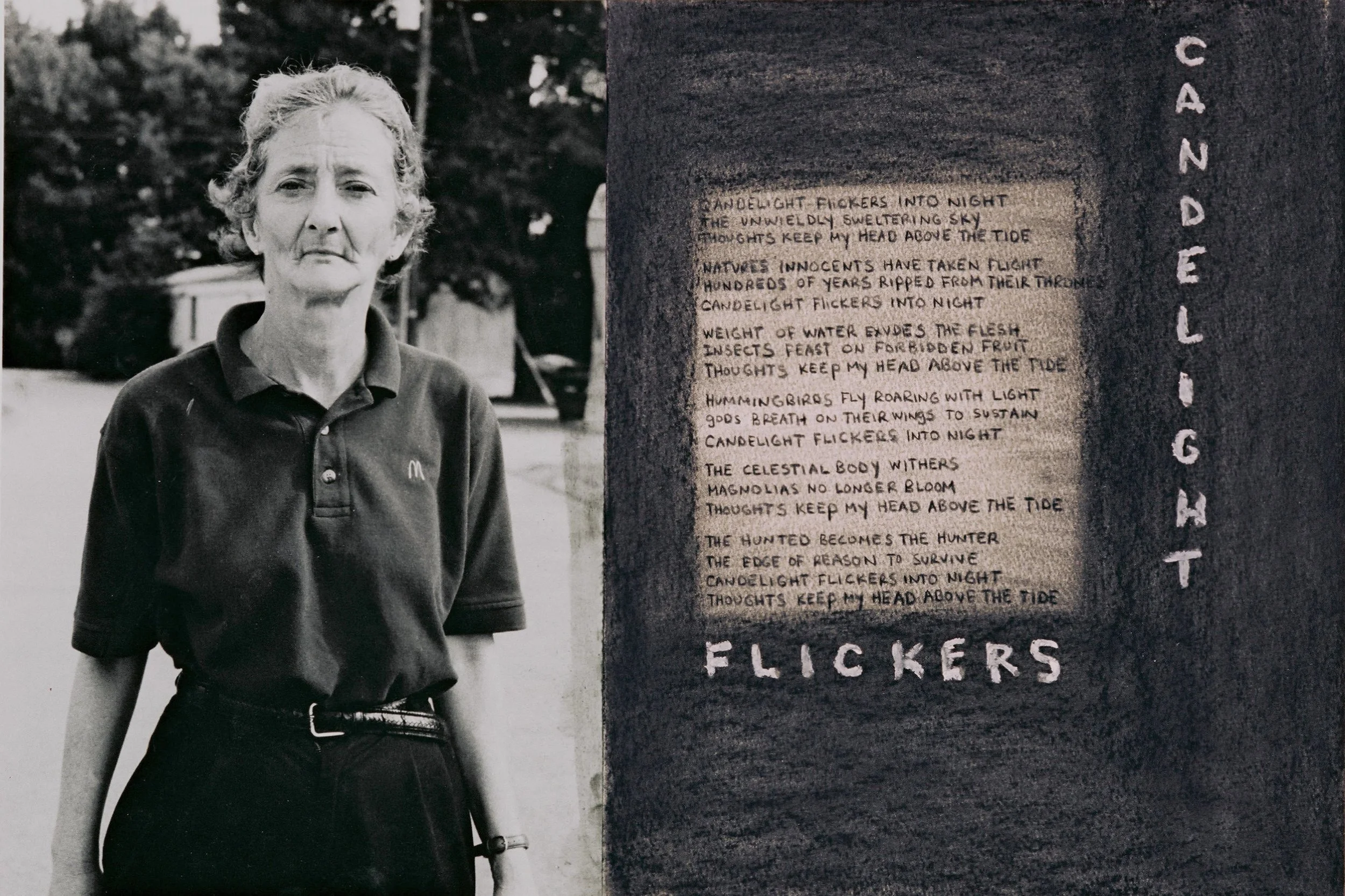Dead lost or displaced
I conceptualized and created this series to document the lives of Louisiana natives mostly in and around New Orleans and Baton Rouge. It never occurred to me that this series would become my memorial so to speak to the innocent, who either are dead, lost or displaced due to the events that occurred after Hurricane Katrina struck New Orleans. During the 11 day AFTERMATH of Hurricane Katrina, the one thing that helped me cope with the despair and anger was working on the sentiments to place with the images. In the background as I worked on these pieces I listened to NPR on a transistor radio. I’ll never forget the sounds of the automatic weapons of the National Guard as they claimed the streets of New Orleans.
REVIEWS
“Take the compassionate eye of photographer Walker Evans, add the contemporary tragedy of Hurricane Katrina and a dash of poetry, and you have Terrence Sanders. Sanders’s subjects confront the camera willingly and without coercion, with a variety of attitudes—some are vulnerable, others manage a shy or sheepish smile, a couple of them look high on something; all are united by their education in the School of Hard Knocks. "There but for the grace of God go I," might be the first thought to occur to viewers, followed by the question: What happened to these people that made them slip through the cracks? Was it moral weakness or just plain bad luck?
Every day we pass people like this, on our way to work or in the supermarket parking lot, waiting by the bus stop, and often they barely register on our consciousness—and that is surely the express purpose behind Sanders' work: to make us look these people in the eye. These artworks preserve a momentary impression of a specific person on a certain day that for some reason the artist found worthy of documentation. Their presence is not immediate and palpable, but rather somewhat abstracted, shaped by the black and white film and the addition of diaristic prose that is yet subjective, from the artist's point of view. These artworks are politically motivated—they get under your skin, and once there, make themselves impossible to ignore. "You do your part and I'll do mine," the artist has written. Point well taken, Mr. Sanders. -JoAnne S. Northrup, Director of Contemporary Art Initiatives at the Nevada Museum of Art and the former Chief Curator at the Katie and Drew Gibson San Jose Museum of Art.
“The essential function of a memorial is to preserve a memory. Against the erosion of time, memorials resist the human flaws of forgetfulness and apathy. When executing his “Dead, Lost, or Displaced” series in the days immediately following Katrina, Sanders was unaware that he was creating his own kind of memorial. Two memories are simultaneously preserved: photographic documentation of living or once living New Orleanians. Their presence exists as an affirmation of what was and what continues to persist. The other memory preserved is one that many can relate to: the surge of emotions and concerns at that moment of crisis. The words commemorate something more intangible, but which nonetheless has a equally ‘felt’ presence in this town.” -Miranda Lash, Speed Art Museum’s Curator of Contemporary Art and the Former Curator of Modern and Contemporary Art at the New Orleans Museum of Art.
“We all have things / issues we doubt to say, things we think embarrassing or shameful to express. The people in Terrence Sanders's photography are saying this without speech without sound but through capture of emotion and feeling through sight. They made me think and not speak just wonder and relate.”-Michaela Kastly, Camera Press Gallery, London.
“This body of work puts a huge twist on documentary photography. As we sometimes selfishly attach to someone’s image because they have an intriguing look-Terrence Sanders clearly wants to know the stories behind the faces.” -Nicole Morgenthau, Photographer, New York City.
“Terrence Sanders has a wonderful way of capturing true human emotion in his work. His use of mixed media adds depth and meaning to photographs already full to the brim with the power of his message. The artist clearly has a passion for displaying the harsh reality of American life, and he manages to make this reality beautiful, thought provoking, and impossible to ignore. -Julia Henderson, Art Editor, Fringe Magazine.
‘In contrast to Terrence Sanders paintings which are filled with political and racial rage, I found the “Dead Lost or Displaced” series to be extremely poetic and personal on a level which revealed an inner beauty and compassion of the artist which made the viewer aware of the deep trauma and inner feelings of his subjects. A true accomplishment.” -Ronald Sosinski, Director of Proposition Gallery, New York City



























